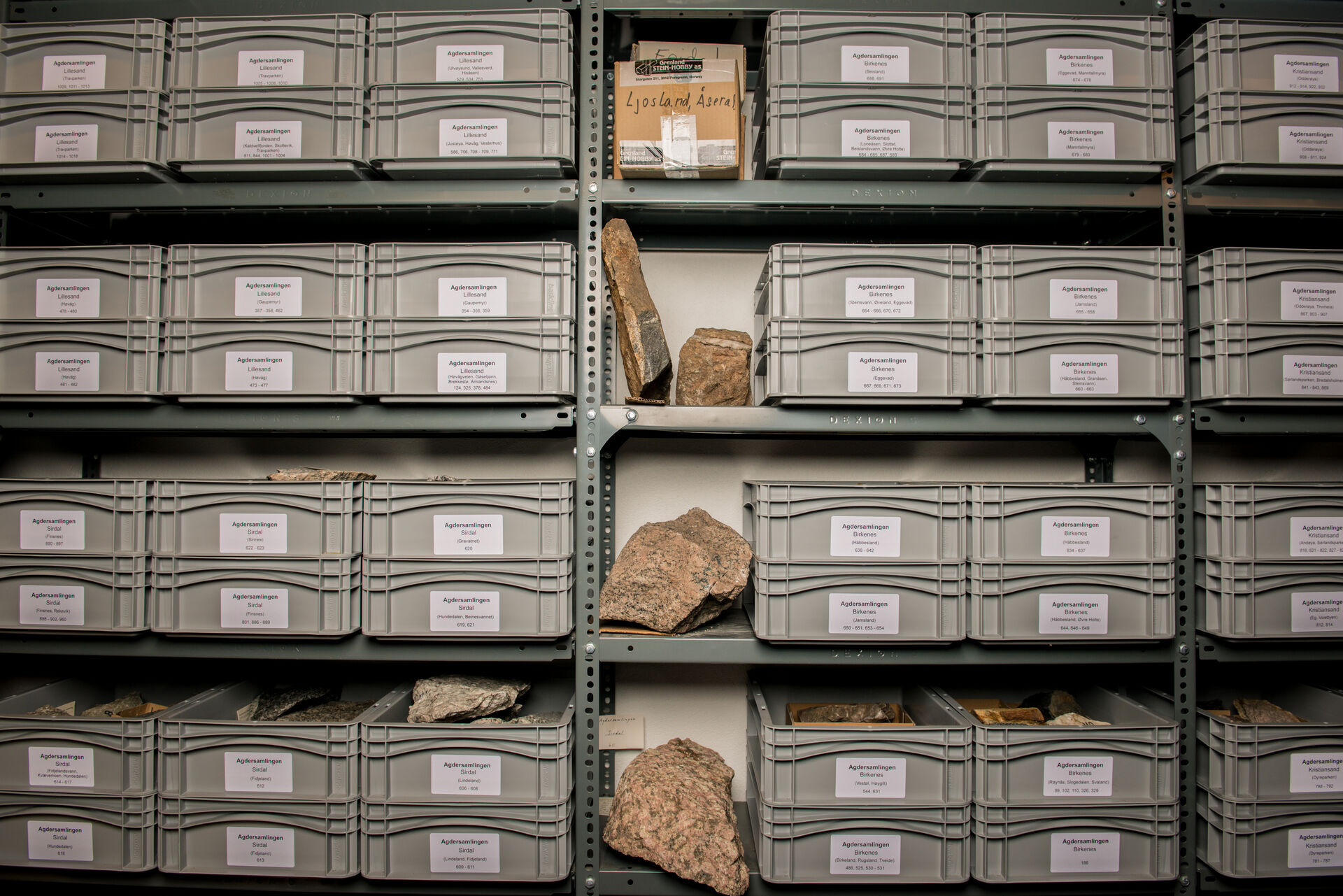Geology is the study of the earth's composition, origin, structure and development. In our geological collection, we have, among other things, rocks, minerals, meteorites from outer space, and fossils of animals that lived more than 400 million years ago.
-beskjert.jpeg)
Geological collections are important
The scientific collections are important for several reasons:
- The collections serve as documentation of our nature
- The collectibles can be used for research, teaching and exhibitions
- The collections ensure that samples are taken care of, which is important if the rocks/minerals from a particular location become unavailable, for example if roads and buildings are built over the site.
Samlingene til museet
The museum has six geological collections with physical objects. There are nearly 10,000 objects in the collections. You can view a selection of these collections in our permanent exhibition on the ground floor and in the corridor leading to the Cacti house on the first floor. In the botanical garden, there is a collection of polished rocks from Agder county.
Rock collection
The collection of rocks is mainly collected in Norway, but we do have some rocks from other parts of the world. We even have rocks from space, they are called meteorites.
The collections consists of everything from limestone formed from remains of dead animals, to gneiss with elaborate textures, and interesting volcanic rocks.
Mineral collection
Our largest collection is the collection of minerals. It contains more than 4000 objects. In this collection there are beautiful minerals from Agder, and rare minerals from other parts of Norway.
An example is the mineral called willemite. It is beige and does not look very exciting at first glance, but in a dark room, exposed to UV-light, the mineral has a green glow! This is called fluorescence.
Other collections
We have a collection of more than 2000 samples of rocks from all the municipalities of Agder, and a mine collection consisting of objects from different mines in Norway.
We have a fossil collection consisting of nearly 400 fossils of animals and plants from the Cambrian period and up to a few million years ago. Some fossils from the quaternary period are still alive today. Many of these (mainly sea shells) are represented in the quaternary collection.


In total, the various geological collections consist of almost 10,000 objects.
Photo: ©Naturmuseum og Botanisk Hage, UIA
.jpeg)
The collection of minerals consists of more than 4,000 objects.
Photo: ©Naturmuseum og Botanisk Hage, UIA/ Lisbeth Breland
.jpeg)
Photo: ©Naturmuseum og Botanisk Hage, UIA/ Lisbeth Breland
.jpeg)
Photo: ©Naturmuseum og Botanisk Hage, UIA/ Lisbeth Breland
.jpeg)
Photo: ©Naturmuseum og Botanisk Hage, UIA/ Lisbeth Breland
.jpeg)
Photo: ©Naturmuseum og Botanisk Hage, UIA/ Lisbeth Breland
Contact person
- tor.sigvald.johansen@uia.no
- Phone
- +47 38 14 24 87
Contact Tor Sigvald regarding the geological collections, identification of minerals and rocks, outreach, and education. Specialization: melting processes in the mantle.


.jpeg?vrtx=thumbnail)
.jpeg?vrtx=thumbnail)
.jpeg?vrtx=thumbnail)
.jpeg?vrtx=thumbnail)
.jpeg?vrtx=thumbnail)